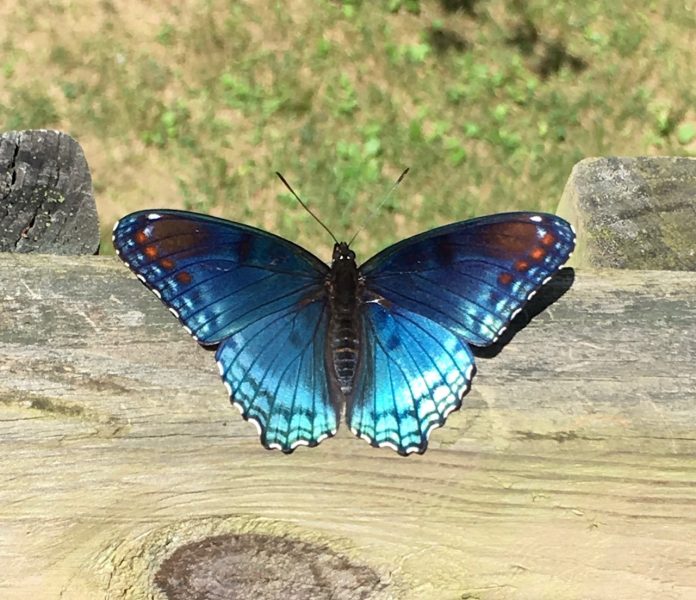Middle school can be a difficult time. It’s even more awkward if you happen to geek out on things like tessellations in art class and walk around engrossed in a book.
My art teacher had a project in which he introduced tessellations. A tessellation is a pattern made of one or more shapes. The shapes must fit snugly together without any gaps, but cannot overlap.
I don’t remember what my project ended up looking like, but it opened my eyes to noticing patterns.
In nature, honeycombs and pineapples are just a couple examples of many tessellations found in nature. People are drawn to the predictable pattern, borrowing ideas from nature and infusing fashion and home decor with similar geometrical elements.
Drawn to symmetry
After a recent trip to our local nursery, I discovered my adolescent obsession with repeating patterns has never left. The basic mathematical principle behind patterns is symmetry.
I was looking for hanging baskets to put on my front porch. However, I was immediately drawn to the table with gerbera daisies. Gerbera daisies, a member of the aster family, are composite flowers. Another composite flower is a sunflower.
The center of the flower contains small disc florets that are actually tiny flowers. They are arranged in radial symmetry, any lengthwise sectional line will create mirror images. The vividly colorful petals are ray florets.
The often bright and vibrant breed of flower was discovered in South Africa where they continue to grow as perennials. Today, the primary producers of gerbera daisies are the Netherlands and Columbia.
Hybrid techniques have increased the variety of colors and types of petals in the flower.
In the past, I planted my gerbera daisies in a flower bed that received direct afternoon sunlight. To encourage beautiful blooms through the summer season, these flowers need to be deadheaded at the base of the wilted stalk.
I have also planted them in pots for the season but did not realize they can spend the winter indoors. Gerbera daisies should be close to a sunny window in order to bask in indirect sunlight.
Unfortunately, they are prone to fungal gnats and should be in an area with good circulation. I’m planning on experimenting by bringing my new plants inside at the end of the season.
I chose three different colors of gerbera daisies before I was able to move on to the hanging baskets.
Butterfly bushes
However, I was sidetracked again by several pots of butterfly bushes. After seeing many types of butterflies along the creek bed last summer, I wanted to find more plants to place in my yard to entice them to fly closer to my house.
Butterflies are another example of symmetry. Instead of radial symmetry like many flowers, they have bilateral symmetry. A centerline in a butterfly’s body divides two mirror images with matching patterns on both wings. Many scientists believe perceived beauty is actually recognition of perfect symmetry.
I made an impulse purchase and bought a light-colored lavender butterfly bush. I was alarmed later when I learned that in many regions in the U.S., butterfly bushes are classified as an invasive species. It is a wonderful nectar plant for adult butterflies, but it often crowds out native host plants for butterflies.
Host plants provide food for caterpillars, which eat leaves and plants instead of nectar-like their adult counterparts. Female butterflies choose host plants on which to lay their eggs because the young caterpillars will not have to travel to find food.
I decided to try the butterfly bush for a year and observe its growth. By planting it in a flowerbed, the growth can be somewhat controlled by deadheading. I also chose to add native plants like dill and milkweed to attract butterflies. I already have established coneflowers and black-eyed Susans in the flowerbed which also attract butterflies.
It certainly is a beautiful time of year. Finding balance and order in nature has a calming effect during chaotic times.
Luckily for me, as an adult I can say, “Did you know … ” and it receives a much better response than in middle school.













